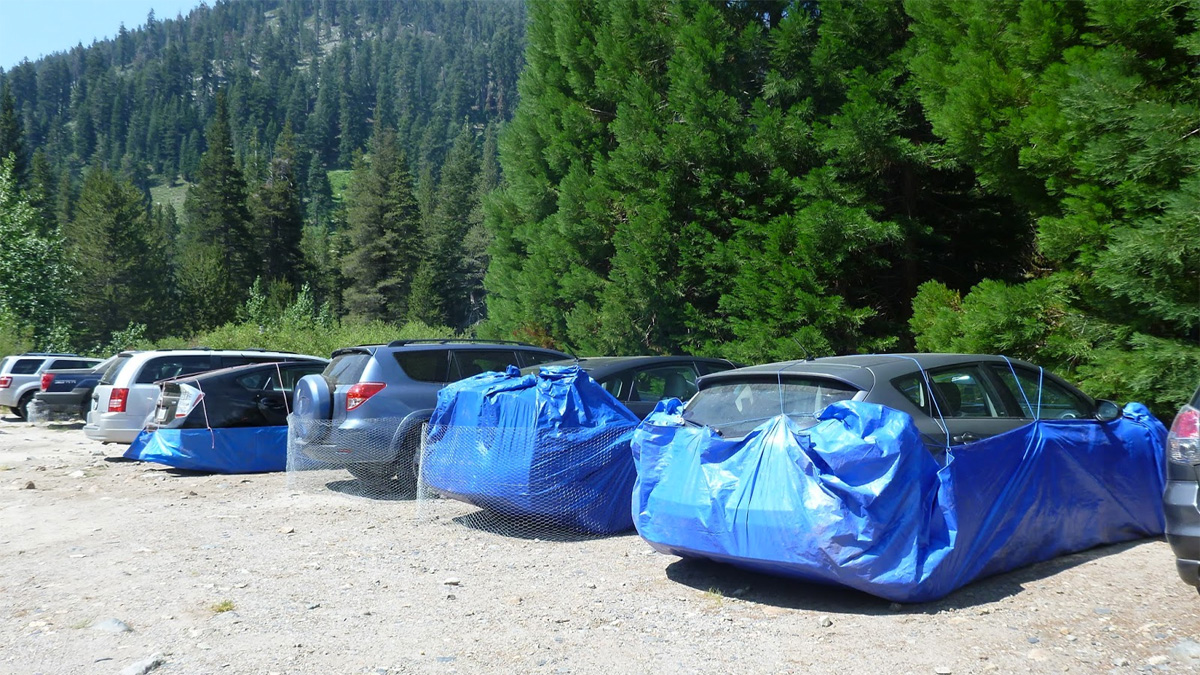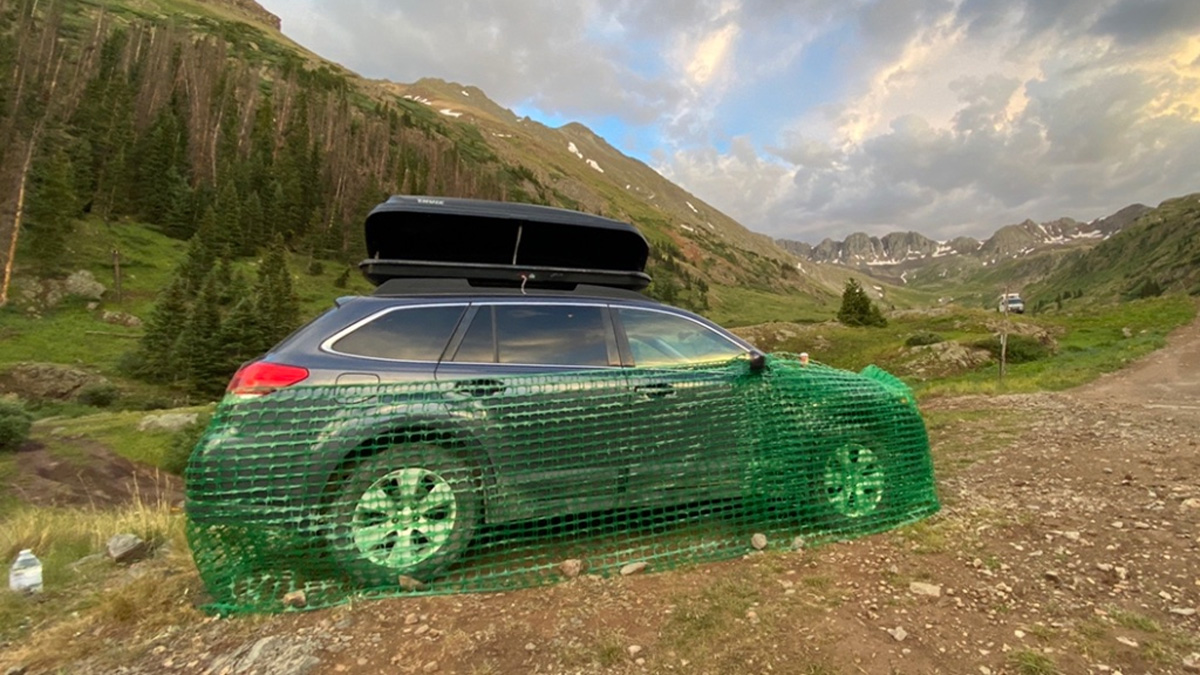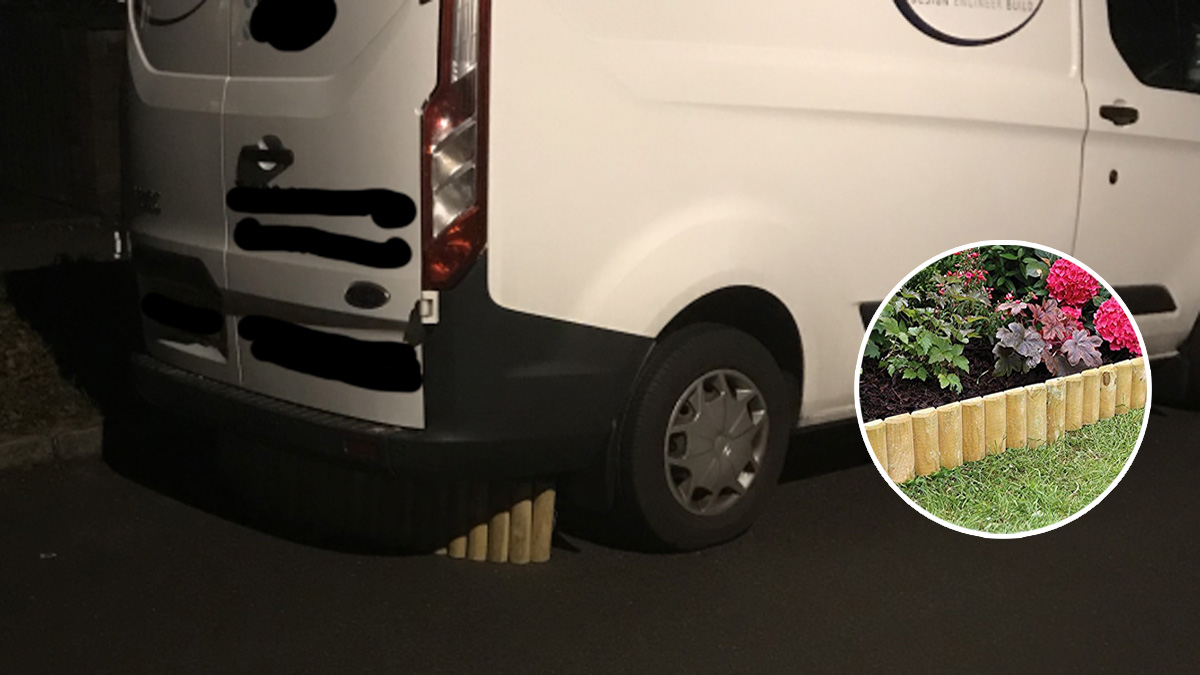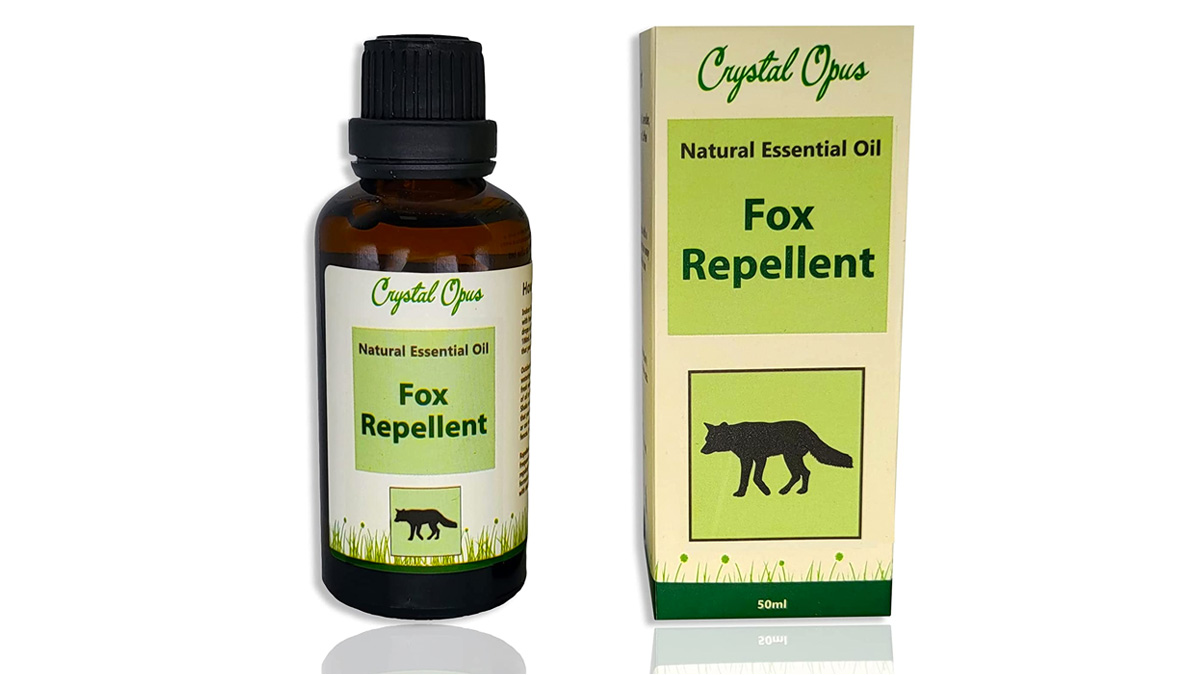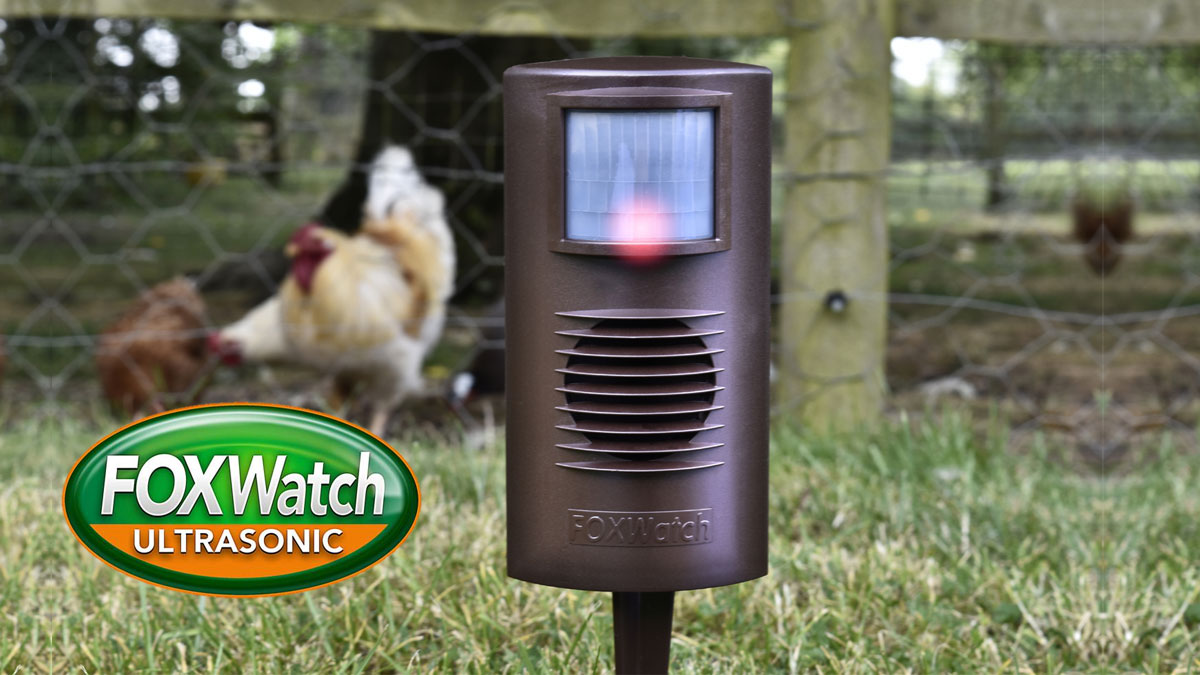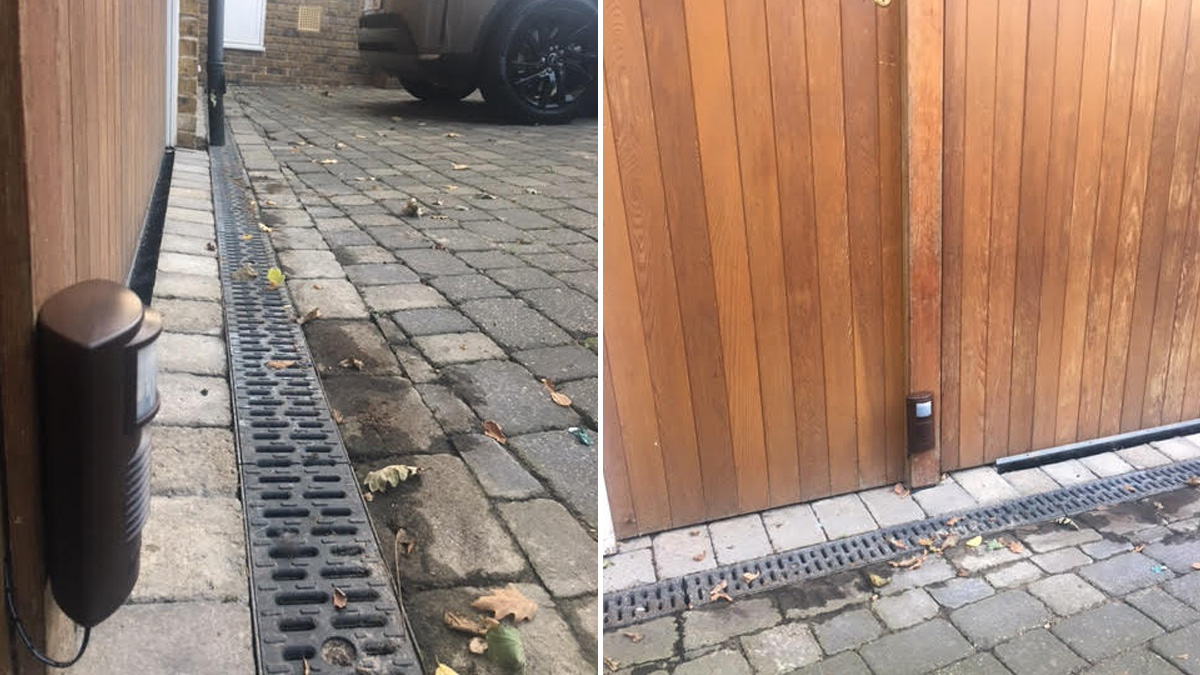How do I stop foxes from chewing my car wires and cables?
More and more of us are experiencing the incredibly frustrating problem of urban foxes getting underneath cars and chewing brake cables, emissions sensors and other important components.
Not only is it frustrating, but it can be very expensive to fix, with repair bills of between £700 – £1,700 not unheard of.
Additionally, just getting the repairs done does not tackle the root problem and you may well have had the unpleasant experience of getting the costly repairs done only to find the fox has chewed through wiring again a few days later!
This problem was featured on Radio 4 and you can hear in the audio clip below the amount of damage and expense caused to this poor lady in Greenwich.
Audio from You & Yours, BBC Radio 4 – ‘Fox causes over £800 damage to a car.’
Why do foxes chew wiring and cables?
Various theories have been put forward as reasons why foxes like to chew car wiring.
One explanation was put forward after a spate of fox-induced brake failures near Bromley in Kent in 2009 which suggested that foxes were attracted to Glycol, a viscous chemical found in brake fluid.
Another idea is that car manufacturers use some sort or soy or animal fat substance in the rubber coating that protects car wiring and this proves too difficult for foxes to resist.
As evidenced with the recent VW emissions scandal, car makers are notoriously shy about what goes into their components so this theory has neither been confirmed nor denied.
A third explanation is that it’s cubs simply practising their hunting skills.
Many of us with foxes in our gardens have experienced shoes, toys and other small items completely chewed and destroyed by cubs learning to hunt and chew their ‘prey’ and chewing car wiring could simply be an extension of this.
Whatever the cause, it’s annoying and expensive, and many of us have long been searching for a solution to the problem.
- Are mice getting into your classic or project car? Keep them away with our PESTController Ultrasonic Mouse Deterrent!
What can I do to stop foxes chewing my wires?
Stopping a fox from getting under your car is not easy and may well involve you having to make some sort of sacrifice or compromise.
A lot also depends on where you park your car. For example, you may have more options for solving the problem if you have a driveway rather than if your car is left on the street.
That being said, there are some practical solutions listed below for you to take a look at and decide which one might be best suited for your individual circumstances.
If you’ve had car repair bills running into hundreds of pounds, due to damage caused by foxes, then these solutions have got to be worth a look.
1. Wrap your car in a tarpaulin
This is a tip from park rangers to people visiting Sequoia National Park in California, and you can see a picture from the visitor car park above.
The park has a terrible problem with marmots (a groundhog-type animal) getting under cars in the car park and chewing their way through cables, much like foxes do in the UK.
It’s a serious issue as many people can drive off, not realising they have a problem until they need to use their brakes, or suffer mechanical failure in a remote spot.
The advice to visitors is to bring a large, heavy-duty tarpaulin [aff] and lie it out flat on your parking spot.
You then drive your car onto the tarpaulin and wrap the tarpaulin up and over, attaching it with thick string or rope across the top.
This makes the wheel arches and chassis of your car completely inaccessible to foxes and, provided you use thick material, the foxes won’t be able to chew through.
You just need to ensure that the tarp is large enough to cover the bottom and sides of your car so it can be tied up over the top.
Yes, it’s a bit ugly and it does make parking your car slightly more of an ordeal, but with the alternative being an inconvenient and expensive trip to the garage, it’s worth the extra effort and is very effective.
It’s not a routine that you need to go through until the end of time either. You just need to do it for long enough to break the fox’s habit, so they stop associating your car with something they can chew on.
2. Barricade your car with plastic safety fencing
As well as marmots, many areas of wilderness in the USA and Canada have problems with porcupines getting under cars and into the engine bay to chew on radiator hoses.
According to some studies, porcupines have a low-sodium diet which causes them to crave salt, particularly in winter. As a result, they chew on all sorts of things to get their salt fix. This can include cars that have picked up high concentrations of salt as a result of roads being gritted.
Whether the UK’s foxes are similarly seeking out salt has not been proven, but is definitely a viable theory in their attraction to car components.
In the photo above, which comes from American Basin in Colorado, the recommendation is to fence off the car in plastic mesh safety fencing [aff] (weighed down with rocks) to stop critters from accessing the underneath of your car.
This would work against foxes and, depending on your circumstances, this might be an easier option for you than using a tarpaulin.
Though there are small gaps in the mesh, it would take such an effort for a fox to chew through, that it will give up long before it makes a hole big enough to fit through. As with a tarp, it’s just a temporary measure to have in place long enough to break the fox’s habit.
3. Block off your car with log roll edging
Another convenient option for protecting the underside of your car (or van) from foxes is to buy some log roll border edging [aff], normally used in gardens for raised flower beds.
The log roll has the convenience of being easy to put away and store when not being used and is quite quick and easy to unravel when you need to set it up.
Though the photo of the van above is not great, you can see the log roll is conveniently tucked away under the back of the van and is not causing an obstruction while being parked on the street.
If you’ve got more space, there’s no reason why you can’t erect a log roll fence around the entire vehicle.
For tucking the log roll slightly under the car, make sure you measure the distance between the ground and bottom of the car and buy an appropriate height.
If constructing a log roll fence that will also protect the wheels, sitting outside the footprint of the car, then you can get log roll edging [aff] that is much higher.
4. Put spiky prickle strips under your car
Prickle strips are meshes of plastic spikes that are normally used for stopping animals from digging or pooing in flowerbeds. The spikes aren’t so sharp that they’ll cause foxes injury, but are uncomfortable enough to stop foxes from wanting to put their paws on them.
Prickle strips usually come in two types; rolls and flat mats. For putting under your car, you’ll want the flat, horizontal mat-style ones [aff]. These are convenient to put under your car when you park and can be quickly removed when you want to drive away.
The rolls of prickle strips usually need tent pegs to hold them flat to the ground, but as you likely park on tarmac, stones or concrete, the flat ones are much more suitable. You could put something heavy on them to weigh them down but you might be able to get away with throwing them under your car as and when you need to without securing them to the ground.
This is not a particularly sophisticated solution but may just be enough to stop the foxes getting underneath and chewing wiring.
5. Spray a scented fox repellent around your car
If you don’t have the time, space or inclination to spend time blocking off your car every time you park, then consider using a scent-based fox repellent [aff].
This particular repellent is made up of chilli, garlic and citronella essential oils – smells that are particularly repellent to foxes. Note that this is concentrated, so you will have to dilute it with water before spraying, using a spray bottle [aff] for small areas or a pressure sprayer [aff], if a larger area needs coverage.
To be effective, it’s best if you spray the repellent on the ground around and underneath the car every day for about a week. The risk of only spraying it once is that foxes may think it’s only a temporary inconvenience, so repeated spraying will break the habit of unwanted chewing and give the fox the impression the nasty smell is now a permanent problem.
6. Protect your car’s bodywork with a roof rack mat
As well as chewing wires, a common problem many people suffer from is foxes (and cats) clambering up on cars.
A car roof provides a good vantage point (particularly for fox cubs), while a bonnet emits warmth if the engine has just been running. This understandably causes car owners anxiety about damage to the paintwork and concerns about chewing to aerial fixings and convertible roofs.
The obvious solution is a good quality car cover [aff], and while this makes sense for cars that aren’t used very much (e.g. classics or SORN), it’s not very practical if you’re using the car on a regular basis.
If you’re taking steps to make the underside and ground around your car much less appealing to foxes, then having them jump up on your car will naturally become less of a problem as time goes on.
However, a good temporary solution is to put a couple of protective PVC mats [aff] on top of your car that are normally used for roof racks. These types of mats are easy to put on and take off, can cope with getting wet and won’t damage your car’s paintwork.
They’re not going to stop determined foxes from climbing on your car but they will at least offer protection and stop the bodywork getting scratched. Take the small wins where you can.
How do I stop foxes coming into my garden?
The above suggestions are all effective ways of stopping the immediate problem of foxes damaging your vehicle. However, they’re also quite time-consuming and require a significant effort from you – not something you want to keep doing over the longer term.
Preventing foxes biting through car cables is definitely an improvement, but what about if you’re also experiencing the other common problems caused by urban foxes – namely, digging and pooing in your garden?
A better solution is to find a way to keep foxes away from the area as a whole, without using a method that requires ongoing effort from you.
The FOXWatch Ultrasonic Fox Deterrent
If foxes are being a nuisance in your garden, then the most effective deterrent is the FoxWatch Ultrasonic Fox Deterrent.
The FoxWatch is a small unit that emits several high-pitched sonic bursts of noise when a fox crosses its motion sensor.
The ultrasonic noises are specially calibrated to be at a frequency that foxes find annoying. The more the fox encounters the unpleasant noises, the less time it will spend in your garden.
The unit can be thought of as a training device, automatically teaching the fox to associate your garden with something negative and make it want to spend time elsewhere.
The FoxWatch is such a popular fox deterrent because it takes less than 5 minutes to set up and can simply sit in your garden (or cover your driveway) with virtually no ongoing input from you, repelling foxes day or night, whether you’re at home or not.
Knowing the FoxWatch is providing 24-hour fox deterrence removes the worry of how to deal with the problem and allows you get on with your life, which should ultimately be the purpose of any fox deterrent.
The FoxWatch is available in the Fox Repellent Expert Store priced at £69.95, which includes a 12 Volt mains adapter, full set up instructions, 90-day moneyback guarantee, 2-year manufacturer’s warranty and free UK delivery.
It’s also the only ultrasonic fox deterrent completely designed and manufactured in the UK.
“We had awful problems with foxes. We had just put down a new lawn and they kept pulling it up by running around the garden, as well as leaving some nasty mess to clean up. Since we put the Foxwatch in the garden the problem has stopped.”
Mrs Bourner, Cleveland
RESOURCES
Some of the resources below may contain affiliate links, which means we receive a commission (at no extra cost to you) if you use that link to make a purchase. We appreciate your use of these links as it helps to keep this website running!
- The FOXWatch Ultrasonic Deterrent
- Heavy duty tarpaulin [aff]
- Plastic mesh safety fencing [aff]
- Log roll border edging [aff]
- Spiky prickle strips [aff]
- Scented fox repellent [aff]
- Protective roof mat [aff]
- The Top 10 Fox Repellents UK
- How to stop foxes pooing in your garden
- How to stop foxes digging in your garden
- 10 reasons foxes come into your garden
- The Top 10 Fox Deterrents USA
- LISTEN: The Fox Repellent Expert Podcast

